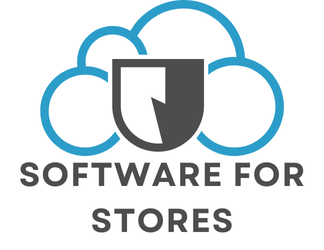Jenkins pipelines are essential for efficient software delivery, yet they often face significant vulnerabilities. Understanding common threats can empower you to fortify your CI/CD processes effectively. Implementing top strategies will not only enhance your security posture but also streamline operations. By adopting robust practices tailored to your pipeline, you can ensure your development environment remains resilient against attacks. Discover how to safeguard your Jenkins setup and maintain the integrity of your code with proactive measures.
Understanding Jenkins Pipeline Vulnerabilities
Jenkins pipelines are a cornerstone in the world of continuous integration and continuous deployment (CI/CD), enabling seamless automation of software development processes. However, Jenkins pipeline security is a critical concern due to the potential risks involved. Understanding the architecture of Jenkins pipelines is vital to identifying and mitigating these risks effectively.
Topic to read : Unlock Superior Wireless Coverage: A Step-by-Step Guide to Building a Mesh Network with OpenWrt
The architecture of Jenkins pipelines facilitates the automation of complex workflows, but it also introduces common vulnerabilities. One such vulnerability is the exposure of sensitive data, such as credentials and tokens, within pipeline scripts. This can occur if these scripts are not properly secured, leading to unauthorized access.
Another prevalent issue is the lack of proper access control measures. Without stringent access controls, users may inadvertently or maliciously alter pipeline configurations, compromising the entire CI/CD process. Additionally, the integration of third-party plugins, while enhancing functionality, can introduce vulnerabilities if these plugins are not regularly updated or vetted for security.
This might interest you : Unlocking the Power of AWS Glue: A Guide to Crafting ETL Jobs for Data Transformation and Loading
The potential impacts of security breaches in Jenkins pipelines are significant. A breach can lead to the leakage of sensitive information, disruption of development processes, and even deployment of malicious code into production environments. Therefore, it is crucial for organizations to prioritize Jenkins pipeline security by implementing best practices such as regular security audits, employing robust access controls, and ensuring all components are up-to-date.
Implementing Security Plugins
Enhancing Jenkins pipeline protection involves integrating Jenkins security plugins. These plugins act as vital security tools, bolstering the system against vulnerabilities. Let's explore some essential plugins and their roles.
Essential Security Plugins
- Credentials Binding Plugin: Safeguards sensitive data by securely storing and accessing credentials.
- Role-Based Authorization Strategy Plugin: Implements fine-grained access control, preventing unauthorized modifications.
- OWASP Dependency-Check Plugin: Identifies and mitigates vulnerabilities in project dependencies.
Installing and Configuring Security Plugins
To install a security plugin, navigate to Jenkins' "Manage Plugins" section. Search for the desired plugin and click "Install without restart". Once installed, configure each plugin by accessing its settings through the "Manage Jenkins" menu. For instance, configure the Credentials Binding Plugin by defining credentials in the "Manage Credentials" section, ensuring they are only accessible to authorized users.
Case Studies
Consider a case where a company integrated the Role-Based Authorization Strategy Plugin. This measure drastically reduced unauthorized configuration changes, enhancing overall pipeline protection. Another example is an organization using the OWASP Dependency-Check Plugin. It identified critical vulnerabilities in dependencies, allowing for timely remediation and preventing potential security breaches.
By implementing these security tools, organizations can significantly strengthen their Jenkins pipelines, ensuring a more secure CI/CD environment.
Conducting Regular Security Audits
Regular security audits are paramount for maintaining a secure Jenkins environment. They help identify vulnerabilities and ensure compliance with security standards, safeguarding the entire CI/CD process. Conducting these audits enables organizations to pinpoint weaknesses in their Jenkins pipelines and rectify them promptly.
To effectively carry out a vulnerability assessment, several frameworks and tools can be employed. Tools like OWASP ZAP and Nessus are popular choices for identifying vulnerabilities within Jenkins environments. These tools provide comprehensive scans and detailed reports on potential security threats, making it easier for teams to address issues efficiently.
Compliance checks are another crucial aspect of security audits. They ensure that Jenkins pipelines adhere to industry regulations and internal policies. Regular compliance checks help organizations maintain their reputation and avoid costly penalties associated with non-compliance.
Documenting audit findings is essential for tracking progress and ensuring accountability. Best practices include creating detailed reports of all identified vulnerabilities and the steps taken to mitigate them. This documentation serves as a valuable reference for future audits and helps in continuously improving the security posture of Jenkins pipelines. By prioritizing regular security audits, organizations can significantly reduce the risk of security breaches and maintain a robust CI/CD environment.
Following Secure Coding Practices
Adopting secure coding practices in Jenkins pipelines is crucial for maintaining code quality and safeguarding against vulnerabilities. By following development best practices, organizations can significantly reduce the risk of security breaches.
Key Secure Coding Principles
- Input Validation: Always validate inputs to prevent injection attacks. This practice ensures that only legitimate data is processed within the pipeline.
- Least Privilege Principle: Grant the minimum permissions necessary for job execution. This limits potential damage from compromised accounts.
- Error Handling: Implement robust error handling to prevent leakage of sensitive information through error messages.
Examples of Secure Coding Practices
- Use parameterized builds to avoid hardcoding sensitive data in scripts.
- Regularly update dependencies and plugins to incorporate security patches.
- Employ code reviews to detect and rectify potential vulnerabilities early in the development process.
Training Developers on Secure Coding
Training developers is essential for fostering a security-conscious culture. Conduct workshops and provide resources on secure coding techniques. This empowers developers to identify and mitigate vulnerabilities proactively. Encouraging collaboration and sharing of best practices within teams further enhances the secure coding environment. By emphasizing secure coding, organizations can build resilient Jenkins pipelines and uphold high code quality standards.
Managing Access Controls and Permissions
In Jenkins, effective access control and user permissions are paramount for maintaining a secure CI/CD environment. Implementing robust security policies ensures that only authorised personnel can modify pipeline configurations, reducing the risk of unauthorised access.
Best Practices for Managing User Access
To manage user access efficiently, establish clear security policies. Define roles with specific permissions, ensuring users have access only to the resources necessary for their tasks. This minimises potential security breaches by adhering to the principle of least privilege.
Strategies for Implementing Role-Based Access Control
Adopt a role-based access control (RBAC) strategy to streamline permission management. Assign roles to users based on their responsibilities, and regularly review these roles to adjust permissions as needed. This approach enhances security by preventing unauthorised modifications to Jenkins pipelines.
Monitoring and Auditing User Permissions
Regularly monitor and audit user permissions to identify any discrepancies or unauthorised changes. Utilise Jenkins' built-in auditing features or third-party plugins to track user activities. By maintaining a comprehensive log of user actions, organisations can swiftly detect and address potential security issues, ensuring a secure and compliant Jenkins environment.
Automating Security in the CI/CD Process
Incorporating CI/CD security automation within Jenkins pipelines significantly enhances the security posture of the software development lifecycle. Automating security checks ensures continuous integration processes are safeguarded without manual intervention, saving time and reducing human error.
Benefits of Automating Security Checks
Automating security within CI/CD provides consistent and reliable protection across all stages of development. It swiftly identifies vulnerabilities, ensuring they are addressed before code progresses further down the pipeline. This proactive approach reduces the risk of security breaches and enhances overall software quality.
Tools and Frameworks for Security Integration
Several tools and frameworks facilitate the integration of security into CI/CD processes. Tools like SonarQube and Trivy provide comprehensive scanning capabilities to detect vulnerabilities early. By embedding these tools into Jenkins pipelines, teams can automate security testing, ensuring continuous integration aligns with security best practices.
Real-World Examples
Organizations that have successfully implemented CI/CD security automation report significant improvements in their security posture. For instance, a company integrating SonarQube within their Jenkins pipeline reduced code vulnerabilities by 30% within the first quarter. Another example includes a tech firm using Trivy, which automated container security checks, preventing potential threats from reaching production environments. These examples underscore the tangible benefits of automating security in the CI/CD process.
Monitoring and Incident Response
In the realm of Jenkins security, continuous security monitoring is indispensable. It enables real-time threat detection, ensuring that any anomalies or potential breaches are swiftly identified and addressed. Without ongoing monitoring, vulnerabilities can go unnoticed, leaving systems exposed to threats.
To effectively detect threats in Jenkins, several tools and techniques can be employed. Security monitoring tools like Splunk and ELK Stack provide comprehensive logging and analysis capabilities, enabling teams to track activities and identify suspicious patterns. These tools are essential for maintaining a secure CI/CD environment by offering insights into potential security incidents.
Developing a robust incident response plan is crucial for addressing security breaches effectively. This plan should outline procedures for identifying, containing, and mitigating threats. Key components include:
- Incident identification: Quickly recognise and classify the type of security incident.
- Containment strategies: Implement measures to limit the impact of the breach.
- Eradication and recovery: Remove the threat and restore affected systems to normal operation.
Regularly reviewing and updating the incident response plan ensures readiness against evolving threats. By prioritising security monitoring and incident response, organisations can maintain a resilient Jenkins environment, safeguarding their CI/CD processes from potential security breaches.
Additional Resources and Best Practices
Enhancing Jenkins pipeline security is an ongoing process, and leveraging available Jenkins security resources is crucial. The Jenkins community offers a wealth of information and support to help users implement effective security measures.
Valuable Resources for Jenkins Security
- Jenkins Documentation: The official documentation provides comprehensive guides on securing Jenkins installations and pipelines. It covers topics such as configuring security settings, managing credentials, and implementing access controls.
- Jenkins Security Blog: Regular updates and articles on the latest security threats and patches.
- OWASP Jenkins Security Project: A dedicated initiative providing tools and documentation to improve Jenkins security.
Community Forums and Groups
Engaging with community forums and groups can provide insights and support from experienced Jenkins users. Platforms like Stack Overflow and Jenkins' own mailing lists are excellent places to discuss security challenges and solutions. Participation in these communities can lead to discovering innovative practices and receiving timely advice.
Key Takeaways for Enhancing Security
- Regularly update Jenkins and its plugins.
- Implement role-based access control to limit permissions.
- Conduct routine security audits and assessments.
By utilising these resources and adhering to best practices, organisations can significantly bolster their Jenkins pipeline security, ensuring a robust and resilient CI/CD environment.











